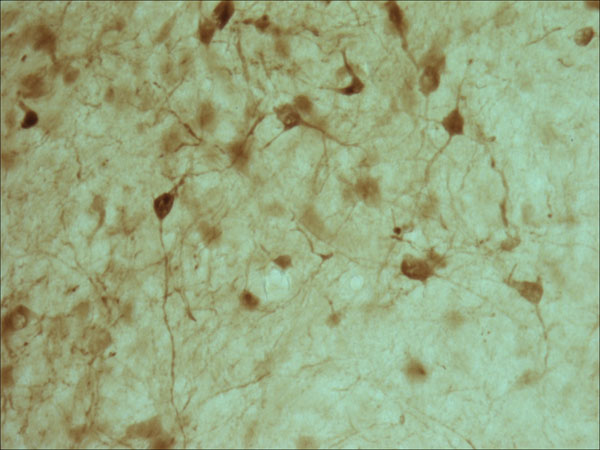
Scientists in Spain Track Recovery in the Auditory Cortex
You could have the best hearing aids on the market, but if there is damage to the central auditory system, you’re still not going to hear. Comprised of a sophisticated network that includes the auditory cortex and the inferior colliculi, the central auditory system is the part of the brain responsible for processing sound. Scientists at the Instituto de Neurociencias de Castilla y León and the Instituto de Investigación en Discapacidades Neurológicas, in Spain, think neurons in this region may have the potential to recover from injury.
Two recent studies conducted by Doctors Cheryl Clarkson, José M. Juíz, and Miguel A. Merchán focus on the inner workings of the central auditory system. Both studies specifically examine how damage to the auditory cortex affects the inferior colliculus. Both studies involved the use of Neurolucida and Stereo Investigator.
The first study used calretinin-immunoreactive neurons as a marker for progress. In the inferior colliculus of a population of rats, an increased level of immunoreactive neurons was revealed 15, 90, and 180 days after the rats suffered cortical lesions. Two hundred forty days later, the number of immunoreactive neurons returned to control levels. The scientists hypothesized this behavior was “related to altered excitability in deafferented neurons.”
In their paper “Long-term regulation in calretinin staining in the rat inferior colliculus after unilateral auditory cortical ablation,” (J Comp Neurol. 2010 Oct 15;518(20):4261-76.), the researchers noted, “our finding may reflect adaptive mechanisms to changes in calcium influx and excitability in inferior colliculus neurons induced by lesions of the descending projection from the cortex to the inferior colliculus.” They added, “Our results indirectly support the notion that an increase in CR levels in the IC may help to restore loss of auditory function after long periods of cortical lesion.”
In their second study, the research group set out to discover if changes in neuronal activity would occur in the inferior colliculus after damage to this area as well as the auditory cortex. One, 15, 90, and 180 days after administering lesions to 24 rats, the scientists acoustically stimulated 20 of them. After sectioning the rats’ brains, they used stereology to determine the number of sound-activated c Fos genes in the inferior colliculus, which in turn gave them an idea of neuronal activity in that region. The scientists found diminished c-Fos labelling at each of the different time periods, but at 15 and 90 days, they started to see recovery in c-Fos labelling, and at 180 days, c-Fos labelling had approached control values.
In their paper “Transient down-regulation of sound-induced c-Fos protein expression in the inferior colliculus after ablation of the auditory cortex” (Front Neuroanat. 2010 Oct 20;4:141.), the authors state: “All these findings indicate that, in adult animals, after ablation of the corticofugal projection to the IC, neurons in this midbrain auditory nucleus and the functional circuits in which they assemble have the capacity of progressively recovering, on the long range, the loss of activity subsequent to AC ablation.”
“Using Stereo Investigator for counting the immunoreactive neurons, and Neurolucida for creating the mosaics saved to us a lot of time and effort,” said Dr. Clarkson.
She explained that her team was able to count the nuclei in a 3D model of the inferior colliculus in only six hours using the optical fractionator probe, which ensured more accurate data.
“The most amazing thing about using this procedure was the reproducibility of the results. When another person counted the same cases, the results were really close,” Clarkson added.
{Image courtesy of Instituto de Neurociencias de Castilla y León}
For updates about MBF Bioscience customer research fan us on Facebook and follow us on Twitter



